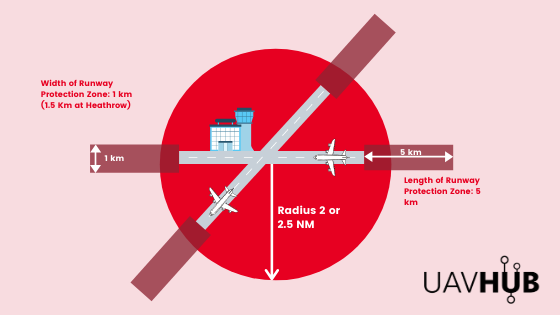.png?width=560&name=The%20Guide%20to%20Flight%20Restriction%20Zones%20(FRZ).png)
If you plan on flying your drones near airports or any airfields (military included) then you need to be aware of the Flight Restriction Zones (FRZ).
The FRZ was introduced on 13th March 2019 and it is a legal requirement for all drone operators whether they are operating commercially or as a hobbyist to get permission from the respected airfrield operator to get permission to fly within the FRZ.
What is a Flight Restriction Zone (FRZ)?
A Flight Restriction Zone is a 2 or 2.5 nautical mile radius boundary (depending on the airport) around all airfields that restrict the use of drones.
In addition to the 2 or 2.5 nautical mile radius boundary around the airport is a runway protection zone which is 5 km by at least 1 km buffer that extends at the end of the runway which protects incoming and outgoing planes.
Both zones extend upwards to a height of 2,000 feet above the airfield.
It is illegal to fly any drone at any time within these restricted zones unless you have permission from NATS, or if NATS don't operate the airport then it's the Air Traffic Control (ATC) at the airport or, if air traffic control is not operational, from the airport itself.

How do I find if I'm in an FRZ?
Below is a map of the UK showing each airfield’s Fligth Restriction Zone. This map enables drone operators to remain clear of the FRZs, or, if you select one of the FRZs you can get the appropriate contact details so you can contact them if you need to fly within the respected FRZ.
How do I get permission to fly in an FRZ?
If you want to fly in an FRZ you firstly need to find out whether: the airfield is operated by NATS,or if you need to contact the Air Traffic Control (ATC), or if you just need permission from whoever operates the airfield.
- If the airfield is operated by NATS then you may need to get permission from them via the NATS Airspace User Portal by submitting a non standard flight application (NSF).
- If you need to conact Air Traffic Control (ATC) then you'll need to find the number for ATC and give them a call to get permission. If you can, we would recommend try getting this in writing (or email) as you may need to unlock the geofencing of your aircraft, especially if you fly DJI drones.
- If there is ‘no one’ to contact in the ‘control tower’ (either because the flight is outside of the operational hours of the ATC/FIS unit or because the aerodrome does not have an ATC/FIS unit in the first place), then you must obtain the permission from the aerodrome operator.
General details of the aerodromes, and their contact numbers can be found on the individual aerodrome websites. Alternatively, full details of protected aerodromes are contained within the UK Aeronautical Information Publication (UK AIP) and the UK Military Aeronautical Information Publication (UK Mil AIP).
Need more information?
If you are unsure about Flight Restriction Zones or you want to get petter permission to fly your drones then get in touch with the team on 0800 033 4400 or email hello@uavhub.com.
Remember, from the 1st July 2020 you don't need a 'license' to operate drones commercially, however, you may need to do a GVC Drone Course or an A2 CofC Drone Course if you want to fly 'closer to uninvolved people'.
Frequently Asked Questions
An FRZ is a zone around an aerodrome or airport which prohibits the use of drones within that boundary unless permission has been granted from ATC, NATS or the operator of the airfield.
You can only fly your drone within an FRZ if you has permission via the NATS airspace user portal, directly from ATC or if there is no ATC then from the aerodrome operator.
Air Traffic Control may limit the height that you can fly your drone within the FRZ if they give you permission, however, the may also grant you permission to go higher than the standard 400 ft.



